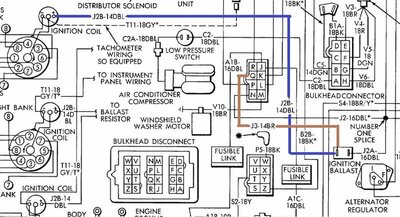ToddMcF2002
Well-Known Member
You've summoned the Nacho!
You've summoned the Nacho!
Thank you for the information....but....I still would like to know HOW the multiple spark discharges are accomplished without a capacitor or what is the speed of the switching transistor to turn the coil off to create the spark then on to recharge the coil for the next, or continuation, of the spark discharge. And just how many sparks that can occur per each cylinder at say 5000 RPM? Just seems to good to be true.....inqiring minds want to know....
BOB RENTON
MSD loves voltage. The resistor should have been removed or bypassed.So the 6AL died in my 1969 GTX. I did not install it - but I have no desire to replace it. My car has a 72+ harness, dual resistor, 70+ voltage regulator and alternator. Seems like the cleanest path to delete MSD is to go with the 5 pin? I'm open to trashing the whole engine harness but I really don't want to toss my new Power Master alternator. Any thoughts?
View attachment 1273880 View attachment 1273881
Clearly the aftermarket distributor pictured is clocked differently than an OE distributor.Any thoughts on the post above regarding the distributor intermediate shaft alignment?
Still sort of new to Mopar so I need to check / confirm these things so I don't destroy my RB. Thanks.Clearly the aftermarket distributor pictured is clocked differently than an OE distributor.
If the ballast is hot it's likely still working as they fail open circuit. But yes your readings appear to be low
So what distributor do you have in there?
The pickup polarity may be swapped.
Two pretty simple tests.
Pull the distributor out set the coil wire about 1/4" from a good ground test for spark by twisting it with the key in start and run position. Spark should be blu/white and crisp.
If so (spark looks good) double check timing on compression stroke and firing order.
The ballast will get hot if you have the key on for a while without the engine running. ( Try not to do that)

Check your bulkhead connector you should have battery voltage at the coil during start.
Test for spark in start and run like I described.
I don't like doing it but try a jumper wire to the coil just as a test
